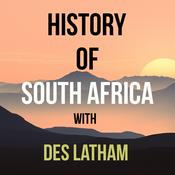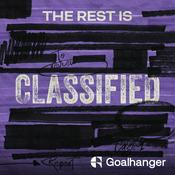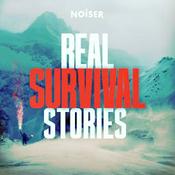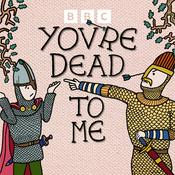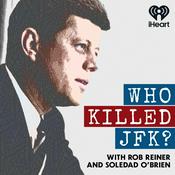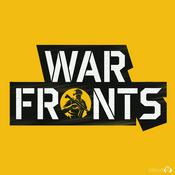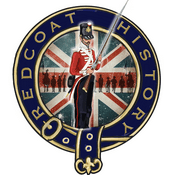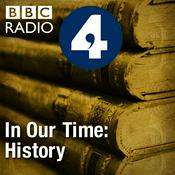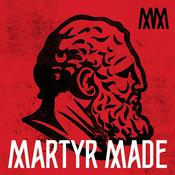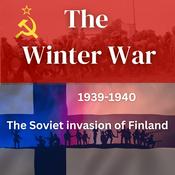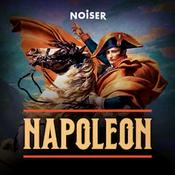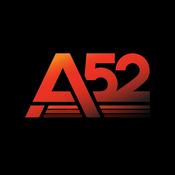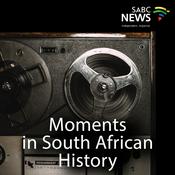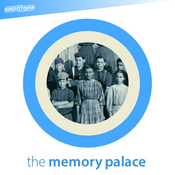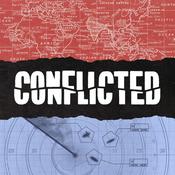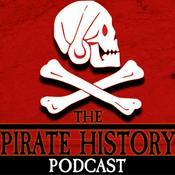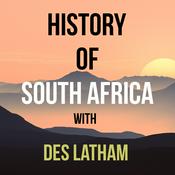113 episodes

Episode 113 - More details about the fierce fighting when PLAN invaded Namibia in April 1989
2023/7/10 | 24 mins.
This is episode 113, we’re wrapping up the series with the final days of South West Africa as the country became Namibia. I’ll talk about the SADF’s departure later in this episode. First we need to go over the events in early April 1989 that almost put paid to the peace agreement. As you heard last week, SWAPO leader Sam Nujoma had ordered his military wing, PLAN to invade Namibia starting on April 1st. We’ve spent time hearing about the diplomatic fallout — now for some details about what happened on the ground. Constable Sakkie Jooste for example, group leader of Koevoets Zulu Five Juliet, who was based on high ground overlooking the Kunene River — a hotspot for SWAPO crossings west of Ruacana. There had been no reports of anything untoward overnight, but that was not surprising because the night had been dark, no moonlight. Excellent for anyone moving around and at first light Jooste’s radio crackled with the report that spoor of about 50 insurgents had been found. Jooste thought they were mistaken, and went to check the signs himself. IT was true, so he reported this to Ruacana police control. The war was supposed to be over, so he didn’t want to make himself look foolish, he didn’t want to appear jittery. Just in case, he called his men together and headed off to track the spoor about 15 km west of Ruacana. It was clear a large number of insurgents had crossed, map reference VL0873, Chevron boots, SWAPO, and some barefoot. Oshakati was contacted, General Dreyer was in command, and Inspector Nick Peens who was commander of Kaokaland police radio’d Jooste back. Mobile Air operations head Captain Keith Fryer was called in, to request a bosbok spotter plane to be despatched to Opuwo so Peens could go see for himself what was going on. He also asked Fryer to organise a few Alouette gunships. “Why should I put gunships on standby?” Asked Fryer, “There’s been no infiltration..” “But there has,” answered police comms control room sergeant Rassie Ras. Then at 08h05 another unit Zulu Hotel commanded by Constable Danie Fourie reported they’d found tracks of insurgents near the others. Most of Zulu’s team, inlcuding /yankee, Hotel, Oscar, were on their way to chase the insurgents while one of the team members radio’d back “April fool, April Foo, the whole lot of us…” He was cut short by Warrant Officer Fanna du Rand On the mountain, Koevoet commanders said a small war had broken out. SWAPO was firing downhill and missing, while the police fired back. The insurgents fled, heading towards the northern slope of the hill, and were spotted by the Captain Slade. Still the police on board didn’t open fire. What was going on? SWAPO was supposed to be moving north inside Angola, towards bases where the UN would be counting them and disarming the fighters. Instead, here they were inside Namibia, shooting at the security forces.

Episode 112 - SWAPO's Sam Nujoma pulls a fast one and UNTAG struggles to cope
2023/7/03 | 23 mins.
So here we are, the sound of peace settled over Ovamboland, it was the end of 1988. The South Africans were actually in a much better position than it appeared. Yes, they were losing Namibia, and were going to also lose their vital strategic port of Walvis Bay. Still, UNITA was left out of the discussion, they would continue to fight against the Angolan MPLA. In 1978 the UN Security Council unanimously adopted Resolution SR 435/78 — and from then on Pretoria led the UN on a merry dance by increasing it’s military involvement in Angola, not decreasing. The United States joined the South Africans in calling for the Cuban withdrawal from the country to be part of any future negotiations. This had eventually led to the dramatic signing on the 22nd December 1988 of the implementation of SR 435/78 with a period of transition set down to begin on April 1st 1989. Elections would be held in Namibia by November 1989, and by mid-1990 Namibia would be independent. But from earlier, by early August 1988, the South Africans had begun a process of withdrawing its troops from southern Angola. On 30 August 1988, the last of the South African troops crossed a temporary steel bridge into SWA/Namibia watched by the world's media and the Joint Monitoring Commission, 36 hours early than the planned time. A convoy of fifty vehicles with around thousand soldiers crossed over singing battle songs. After officers of the three countries walked across the bridge, the South African sappers begun to dismantle the temporary steel bridge. There was a prickly round of discussions about the United Nations Transition Assistance Group or UNTAG. The role of the UN was reduced in early 1989 when the Security Council decided to cut the military component of UNTAG from 7500 to 4650. Originally the permanent members wanted to cut this still further, but the non-aligned movement, the Organisation of African Unity, the Namibian Council of Churches and most Nordic countries were opposed to further cuts - they were really worried about the South Africans. Hundreds of SWAPO guerrillas suddenly began streaming across the border on the 1st April 1989 in large groups of fifty or more. The flood was picked up by elements of the SWATF and police, and alerted the South Africans. Pretoria was stung into action, and shouted foul as the aggrieved party, calling for the UN to deal with what they saw as an obvious attempt by SWAPO to take advantage of their pullout. UNTAG was enjoying demonstrations and celebrations throughout Namibia, when the Administrator-General told the Special Representative that further armed SWAPO personnel had crossed the border and firefights and contacts were occurring on a broad front throughout the Ovambo area of northern Namibia. A series of similar reports came in during the first and second indicating military action and casualties on a scale not seen for many years in the Namibian conflict.

Episode 111 - Two Scorpions in a bottle and peace after 23 years
2023/6/25 | 27 mins.
This is episode 111, in cricket the number is known as Nelson, it’s unlucky for the batting side, and players are expected to stand on one leg as the bowler launches his ball. It’s perhaps symbolic that we get to episode 111 at precisely the moment that the South Africans agree to peace after 23 years of fighting over South West Africa. Within a few months the country will officially be known as Namibia, and soon all SADF troops will have been withdrawn. I was working as a journalist starting in 1987 and had the honour to attend the tripartite signing ceremony in Brazzaville in the Congo, an experience that was strange, weird, otherworldly. The Cubans, South Africans and Angolans signed the Accord, observed by the Americans and the Russians, afterwards everyone drank vodka and mampoer The Russians brought the Vodka, and threw away the bottle caps, the South Africans brought the Mampoer and did the same. Chester Crocker had managed the impossible, but as he told people afterwards, the Cubans and the South Africans were like two scorpions in a bottle — both sides circling each other but not prepared to strike the killer blow. More about this peace in a moment, but first the fallout from the terrible MiG-23 attack on Calueque Dam that killed 11 8SAI troops on 27th June 1988. We ended last episode hearing how the MiGs had easily overcome the South African anti-aircraft defences, and damaged the Calueque Dam wall, hitting it with six 250 kilogramme bombs. As the recriminations and finger pointing followed the blowing up of the Buffel near the dam that led to the deaths of so many young South Africans, Commandant Mike Muller of 61 Mech had a challenge. His tanks and Ratels were stuck on the north side of the Kunene River, the earth ramp that had been built up to the Dam wall to allow the tanks to cross had been destroyed. But just before midnight on Monday June 27 1988, Muller was ordered to withdraw all his forces from Angola. Commandant Jan Hougaard was also ordered to pull all his 32 Battalion units back to South West. That was a surprise. Suddenly, it was over. This 23 year war that had started in Ovamboland, ended with the announcement that a peace agreement had been signed. Sixteen days later on an island in New York harbour, South Africa, Angola and Cuba agreed on the terms of peace, with both the Cubans and the South Africans withdrawing troops from the region.

Episode 110 - Cuban MiG-23s bomb Calueque Dam and 11 SADF troops pay the price
2023/6/19 | 21 mins.
When we left off last episode, the Cubans and Angolans were gearing up to face another invasion by 61 Mech and 4SAI, Operation Excite as it was to become known. But for once, the Cubans had decided that they’d seize the initiative and were about to launch a two pronged assault towards the South Africans from Xangongo. Just a quick recap, 61 Mech had arrived in the eastern theatre with a tank squadron, four more motorised infantry companies from 32 Battalion, including their anti-tank troop in four Ratel 90s and four more ZT3s, 3 motorised companies from 101 Battalion in Casspirs, one motorised company each from 1 parachute, 202 and 701 Battalions who were in Buffels. The SADF artillery support was also significant, a battery each of G-5s, G-2s, Valkiri rocket launchers and 120mm mortars. This was task force Zulu under command of Colonel Michael Delport. The South Africans had built an approach ramp up to Calueque Dam which allowed the Olifants and the Ratels to cross over for the invasion. Ostensibly the plan was to flush out the SAM-6 missile stations which were based around Techipa then hit them with artillery, but also to push the Cubans back from the dam which provided water and power to Ovamboland. It was a key point in the war. On the 23 June 1988, reconnaissance units reported a heavy Cuban artillery bombardment ahead of the dust cloud, it appeared an attack force was heading south and was eventually spotted on the 24th by members of 32 Battalion. Reccies also spotted Cuban columns moving southwards from Techipa towards Calueque, with this stop-start advance the technique preferred by the Russians. Bombard, move, dig in, bombard, move, dig in. There appeared to be a two-pronged assault under way. It was to be a furious battle, one which ended when MiG-23s bombed Calueque Dam, killing 11 8SAI soldiers - the worst single incident for the SADF in the entire 23 year war.

Episode 109 - A Bosbok survives a missile near miss as both the SADF and the Cubans gear up
2023/6/11 | 21 mins.
We left off last week hearing that the Cuban 50th Division had been moved towards the SWA Border, a clear message to Pretoria that Fidel Castro was no longer going to tolerate the losses that he and FAPLA had endured in southern Angola. All this as the South Africans, Cubans, Angolans, Americans and Russians were negotiating the future of Namibia. Time was running out. And in particular for a small group of men, a platoon if you like, that was going to take the brunt of a MiG bombing raid close to the Calueque Dam, just across the cutline. ‘Sent to deal with this threat was Commandant Jan Hougaard who by how had discovered that the biggest threat seemed to lie around the small town of Techipa around 50kilometers inside Angola. Besides thousands of Cuban soldiers, it had also begun to spout radio antennas and what appeared to be anti-aircraft positions. Because the South Africans were stretched so thinly, the SADF top brass could only send 500 soldiers for a planned assault on the town, all 32 Battalion men. Then the idea was a second conventional force would be setup and moved to Ruacana for a much larger incursion. On the 30 May and 1 June, operational instructions for Operation Hilti were released to the officers who’d be planning South Africa’s invasion. The op was to be enamed Operation Prone later - development of a conventional and counterinsurgency plan for north-west South-West Africa and south-western Angola. The instructions called for a sub-phase called Operation Excite to regain military control of south-west Angola by August 1988.
More History podcasts
Trending History podcasts
About South African Border Wars
Listen to South African Border Wars, History of South Africa podcast and many other podcasts from around the world with the radio.net app
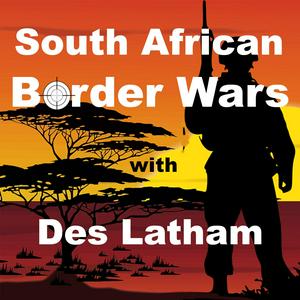
Get the free radio.net app
- Stations and podcasts to bookmark
- Stream via Wi-Fi or Bluetooth
- Supports Carplay & Android Auto
- Many other app features
Get the free radio.net app
- Stations and podcasts to bookmark
- Stream via Wi-Fi or Bluetooth
- Supports Carplay & Android Auto
- Many other app features


South African Border Wars
download the app,
start listening.
